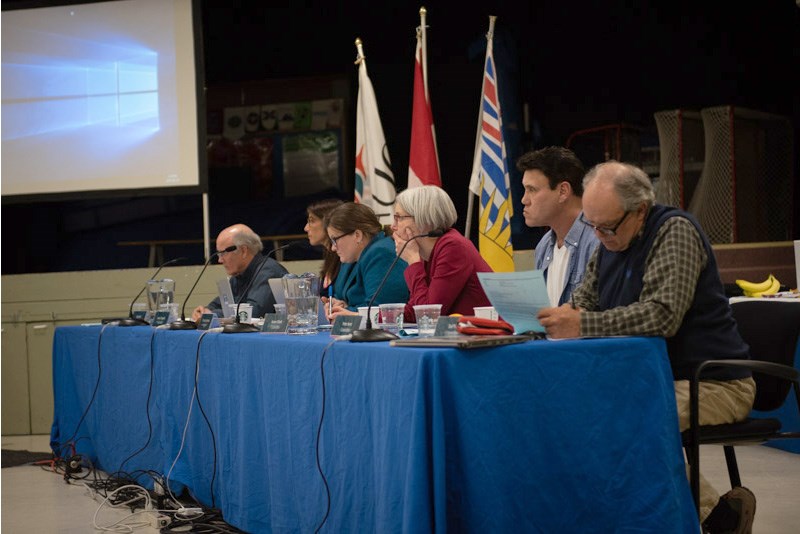As the deadline to set the tax bylaws for 2018 approaches, councillors are being asked to balance business taxes against residential rates.
Based on the yearly District budget finalized on March 6, the tax revenue required to operate is $27.7 million, which is a 6.33 per cent increase over last year’s tax revenue requirement.
The majority of Squamish’s tax income comes from residential properties and businesses, with some of the tax burden also being covered by utilities and Squamish Terminals.
At an April 10 Finance and Audit Committee meeting, council debated shifting some of that burden from business onto residential.
“You can’t sell coffees and make our tax rate,” argued Coun. Susan Chapelle. “Taxes are killing our downtown businesses. It’s going to be a big hit this year to have nine per cent taxes and that hit [from BC assessments]. We have to adjust.”
Taxes are calculated based on ratios that compare all rates with the residential baseline (currently a tax rate of 3.16). The ratios currently being proposed are 2.8 for business (or a 8.84 tax rate), 3.82 for light industrial (or a 12.06 tax rate) and 26.0 for major industry.
Municipal taxes are calculated based on the property assessments done by BC Assessment, which change every year.
This year, residential property assessments saw an average increase of 10.14 per cent in Squamish, while businesses saw a 18.19 per cent increase and light industry saw a 9.99 per cent increase, according to BC assessments.
While that average leap wasn’t quite as high as last year, some properties — particularly downtown on Cleveland Avenue — will be seeing a major hike in their tax bill because of higher property values.
Chapelle argued that the business tax rate should be brought down to the provincial average. The current proposed ratio for Squamish is 2.8, while the BC average is 2.73.
“It’s important to show businesses we care,” she said.
Chapelle argued that because the number of residential properties was much higher than the number of businesses, the increase on individual homeowners would be comparatively small.
Mayor Patricia Heintzman also supported the decrease in business taxes.
Coun. Doug Race said he was content with the proposed ratio at 2.8.
“I’m happy with where it is right now,” he said.
“I look at this as an anomaly that affects some businesses, but not all businesses, with the land evaluation on Cleveland Avenue. It’s one of the quirks of the system we need to live with. If you’re giving a benefit to soften that blow, for the landlords, you’re also giving the benefit to Home Depot and Walmart. It’s all the same class.”
The District cannot apply to different tax rates to different types of businesses or businesses located in a specific geographic area.
Christine Mathews, the District’s Chief Financial Officer, warned that regardless of the municipal business tax ratio, many properties would still see a major increase.
“The small property on Cleveland is going to be impacted, it doesn’t matter if you move the ratio, they will be impacted this year, and we won’t be able to protect them. I just want to make that clear,” she said.
Coun. Karen Elliott told the committee she was concerned about “robbing Peter to pay Paul” and wanted to keep residential rates low.
“It’s a challenging juggle. For me, this creates the right balance for this year,” said Elliott.
The deadline to pass the 2018 tax rates is May 14.
The finalized rates will likely appear before council early next month.




